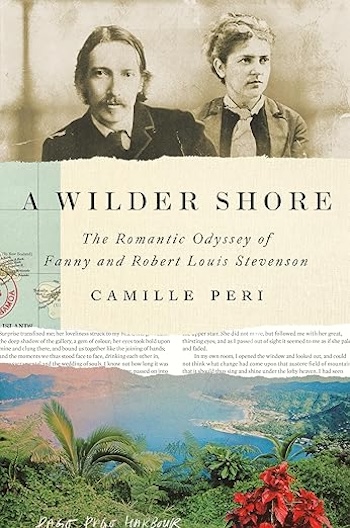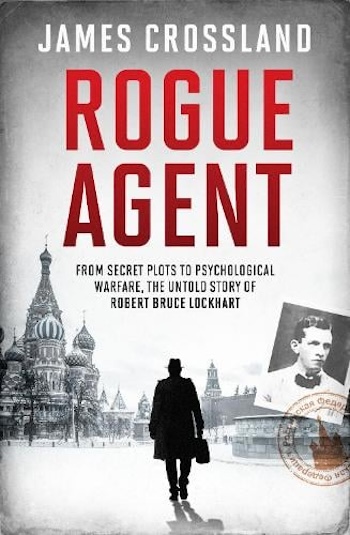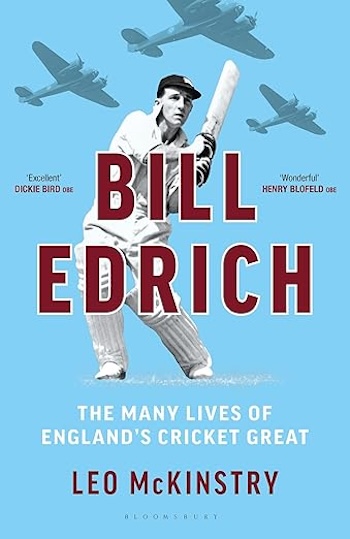When it comes to gifts, books are a failsafe option, notably when the recipient is someone who has everything but you know that a particular subject might appeal to them. From romantic history to Cold War espionage to sporting genius, Philip Cottam chooses three stellar biographies of lesser-known heroes that are bound to appeal to that hard-to-buy relative…
A Wilder Shore: The Romantic Odyssey of Fanny and Robert Louis Stephenson
 In some ways Fanny van der Grift and Robert Louis Stephenson appear a somewhat strange coupling. Fanny was ten years older than Robert, the tough product of frontier America, used to firearms, self-sufficient, independent and resilient. By the time she met Robert in Paris where she had gone to study art, Fanny had been married, run away from her rogue of a first husband, raised two children through writing stories and what odd jobs she could get, including working in a laundry, and coping with the loss of her son. Robert by contrast was a frail and sickly child brought up in a respectable Edinburgh family of civil engineers who, despite his physical frailties, developed a strong independent mind with little regard for the solid and conventional lifestyle of his family.
In some ways Fanny van der Grift and Robert Louis Stephenson appear a somewhat strange coupling. Fanny was ten years older than Robert, the tough product of frontier America, used to firearms, self-sufficient, independent and resilient. By the time she met Robert in Paris where she had gone to study art, Fanny had been married, run away from her rogue of a first husband, raised two children through writing stories and what odd jobs she could get, including working in a laundry, and coping with the loss of her son. Robert by contrast was a frail and sickly child brought up in a respectable Edinburgh family of civil engineers who, despite his physical frailties, developed a strong independent mind with little regard for the solid and conventional lifestyle of his family.
What they shared was a desire for an adventurous lifestyle, a rebellious attitude towards many of the values of the society of the day and a love of the arts and writing stories. Paris was just the beginning of a peripatetic life, partly driven by Stevenson’s failing health, that eventually took them to Samoa where he died almost four years later in 1894 and where his memory is still cherished. His immersion in Samoan culture and stories was an inspiration for many of his later writings. This was not seen in Samoa, and is still not even today, as cultural appropriation but as both a celebration and defence against the imperialism of Western outsiders. It was a defence that extended well beyond just the writing of stories and anti-colonial articles. Robert and Fanny’s beautiful house, Vailima, still stands with its two domestic fireplaces, the only ones on a South Pacific island, and is now a treasured museum in the hills above Apia.
What emerges strongly from Camille Peri’s telling of Fanny and Robert’s story is the extent to which he depended on her support and clearly respected her opinions, whether editorial or political. Fanny’s adventurous spirit was not overwhelmed by her grief and she continued to live a rumbustious life. As she put it herself, she did not intend to become preserved on a dusty shelf. The rounded picture that Peri draws of Fanny and her relationship accords her the respect that so many earlier biographers and critics have denied her. Peri has written a fine book which, as well as being an evocative biography of a relationship is also a reminder of the quality of so much of Stevenson’s work and most especially of those inspired by his and Fanny’s time in the South Pacific. A Wilder Shore by Camille Peri is published by Viking. For more information, visit www.penguindrandomhouse.com.
Rogue Agent: From Secret Plots to Psychological Warfare, The Untold Story of Robert Bruce Lockhart
 Entertaining and well-written, this biography of the Scottish writer, diplomat and occasional government agent Robert Bruce Lockhart reveals an intelligent charmer and gifted linguist who, if he had not had such a disdain for anything resembling routine and an even greater predilection for alcohol and women, could have been far more successful than he was. Certainly, it was eventually far too much for his long-suffering Austrian wife.
Entertaining and well-written, this biography of the Scottish writer, diplomat and occasional government agent Robert Bruce Lockhart reveals an intelligent charmer and gifted linguist who, if he had not had such a disdain for anything resembling routine and an even greater predilection for alcohol and women, could have been far more successful than he was. Certainly, it was eventually far too much for his long-suffering Austrian wife.
Crossland charts his tumultuous career with gusto beginning with the short period when Lockhart worked at the family rubber plantation – where he also became involved with a Malay princess to the dismay of both families. His next stop was the Foreign Office and a posting to Moscow in wartime Tsarist Russia. Once again, his behaviour saw him sent home. However, come the fall of the Tsar and the Bolshevik takeover, in what seems an eccentric decision given his reputation, Lockhart was sent back to Russia to report on the new rulers. It comes as no surprise that Lockhart behaved as he had always done and ended up being arrested with his then lover, a glamorous Estonian countess, for attempted subversion against the new regime. Initially, he had written in support of the Bolsheviks but had changed his mind and started to encourage attempts to overthrow them as he became aware of how tyrannical and murderous they were. He only escaped trial for his activities via a prisoner exchange for Litvinov, the Bolshevik representative in London. It all makes for an exciting read.
Nothing was to be quite as exciting again after Russia. The drinking and womanising remained a constant but were now accompanied by increasing debt. Lockhart was eventually rescued by Lord Beaverbrook giving him a job as a journalist. He also wrote five books, the most successful of which was his first, Memoirs of a British Agent, recounting his experiences in Russia, albeit with the drinking and womanising heavily edited. During the Second World War he was appointed Director General of the Political Warfare Executive to develop propaganda for use against the Germans. After the war he returned to his writing and gradually faded into relative obscurity, dying in 1970. Given his consumption of alcohol that he made it to 82 was somewhat surprising. Rogue Agent by James Crossland is published by Elliott & Thompson, available in hardback from Waterstones.
Bill Edrich: The Many Lives of England’s Cricket Great
 Leo McKinstry has already acquired a reputation as the author of excellent sporting biographies with his books on the Charlton brothers, Alf Ramsay, Geoff Boycott and Jack Hobbs. This time it’s the turn of the cricketer Bill Edrich, whose outstanding test and county career began in the 1930s and resumed after the Second World War during which he was awarded a DFC as a pilot in Bomber Command. Edrich was an impulsive character who combined superb cricket with hard drinking and frequent womanising – rather like Bruce Lockhart but without it damaging his performances when at the crease. His post-match celebrations were known for their exuberance and his five marriages did not prevent him from pursuing liaisons when away from home.
Leo McKinstry has already acquired a reputation as the author of excellent sporting biographies with his books on the Charlton brothers, Alf Ramsay, Geoff Boycott and Jack Hobbs. This time it’s the turn of the cricketer Bill Edrich, whose outstanding test and county career began in the 1930s and resumed after the Second World War during which he was awarded a DFC as a pilot in Bomber Command. Edrich was an impulsive character who combined superb cricket with hard drinking and frequent womanising – rather like Bruce Lockhart but without it damaging his performances when at the crease. His post-match celebrations were known for their exuberance and his five marriages did not prevent him from pursuing liaisons when away from home.
Edrich began his First Class cricket career with Middlesex aged 21 and established himself very quickly as an attacking batsman. He scored over 2,000 runs in his first season and was selected for the first of his 39 Test appearances in his second season. He went on to score an epic 219 against South Africa in the 1938-39 tour and was Wisden Cricketer of the Year in 1940. The war then intervened. However, when cricket resumed, he quickly established himself as a regular member of the Test team as well as scoring at a prodigious rate for his county. In 1947 he and Denis Compton each scored over 3,500 runs in the season a record that has stood ever since.
McKinstry not only brings the cricket to life but also provides a perceptive commentary on how cricket and Edrich’s career and status reflected the social norms of wider society. Edrich played as a professional before the war and only became an amateur afterwards. McKinstry also handles Edrich’s wartime career and its likely impact on his behaviour and personality with sensitivity and does not engage in pop psychology. Given that 44% of those that flew with Bomber Command were killed it would be surprising if stress did not have some long term impact. However, Edrich’s exuberance off the field was already in evidence before the war. In any case, he was not alone. When England retained the Ashes at Adelaide on the 1954-55 tour to Australia the team celebrated by drinking 56 bottles of champagne. The picture of Edrich that emerges from McKinstry’s well-written and engaging biography is of man of mercurial and exuberant temperament who was indomitable when at the crease. Published by Bloomsbury – and featured in the Financial Times’ Best Books of 2024 – for more information, please visit www.bloomsbury.com.
Header photo by Loren Cutler, courtesy of Unsplash




